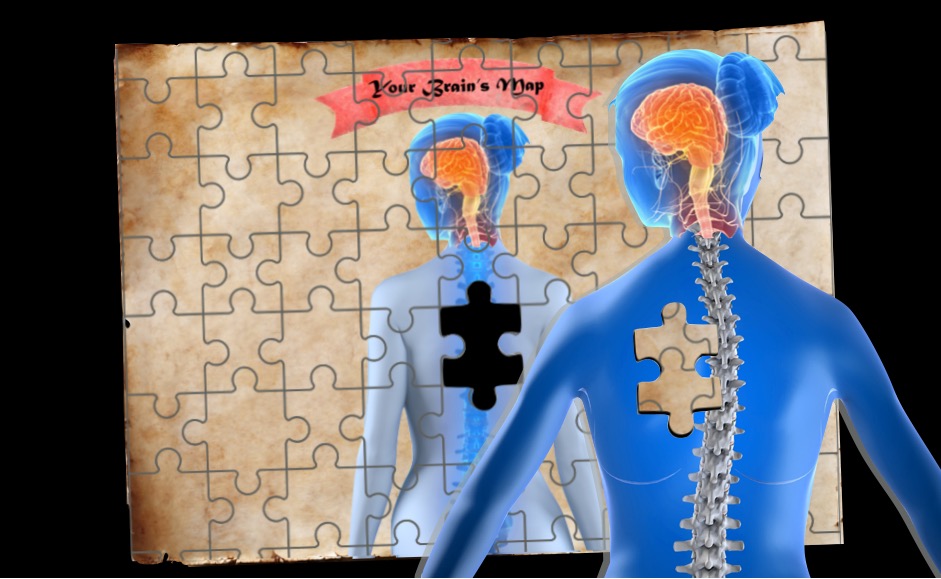How Your Scoliosis Is Affected By Your Brain
Your brain has a map of your body called the sensory map. This map helps inform your brain where it is in space. Since its neurons are densely interconnected to your brain’s motor map, the sensory map is a key part of what instructs your body how to move. The maps are composed of each portion of your body, arms, legs, finger, head, feet, back, etcetera, and the information from them fit together like complex pieces of puzzles that help your brain navigate through your environment.
If a piece of the puzzle in the sensory map is “missing” then the body cannot accurately determine its position and it becomes prone to distortions, such as scoliosis.
A disturbance in sensory motor awareness is one of the most common factors that can drive a scoliosis to progress. In other words, the brain does not have an accurate map of where segments of the body are located in space. To put it even more plainly, it’s as if you are missing a key piece in the map of your body in your brain.
One of the most common things that I hear from the parents of my adolescent scoliosis patients is that they are always telling their child to sit up straight, to which their child replies, “But I AM sitting up straight!” That’s because, in their brain, the map is telling them they are sitting up straight when in reality they are tilted over. This phenomenon is a direct manifestation of a lack of sensory awareness in scoliosis.
Because of this missing piece, the brain cannot properly direct posture, movements, and corrections. The distortion in body perception results in mal-positioning of the body, eventually causing mal-adaptations to positional imbalances. These adaptations cause disorganization of the posture leading to scoliosis curvature progression. This is known as the Vicious Cycle of Scoliosis.
Improving Your Sensory Motor Function in Scoliosis
Postural collapse of the spine is usually the source of pain for progressing scoliosis patients. Helping them develop a more accurate body brain map prevents their spine from further collapse and the spine is then able to support a more upright position.
As the brain adapts to new and improved information, it begins instructing muscles around the spine to adapt to a “new normal” resulting in postural adjustments that better support the spine.
A Lack of Sensory-Motor Awareness in Scoliosis can be a major factor in the progression of the condition and should be addressed in conservative treatment.
Therapies For Scoliosis That Help Improve Sensory-Motor Awareness
In readjustment processes, lengthening and strengthening the specific muscles that had adaptively shortened and weakened due to the scoliosis begin to function more correctly in the newly adopted, more central position.
Knowing what your body needs to do and your body actually doing those things are often two completely different things. That’s why scoliosis specific exercises, like Nu-Schroth, are an important piece of any scoliosis rehabilitation program.
In order to get your body to react in a way that better supports the upright posture of your scoliotic spine, you need to do things that make it happen without thinking about it. Nu-Schroth helps you identify the weakened muscles and teaches you how to activate them more fully to reduce your scoliosis. Through dynamic activities integration, corrections to your nervous system become automatic.
Over time, these new and improved postural and movement patterns can become permanent in the brain, thus allowing the body to reduce distortion caused by lack of sensory motor awareness permanently. Postural and movement patterns can have a profoundly positive impact on your scoliosis.

